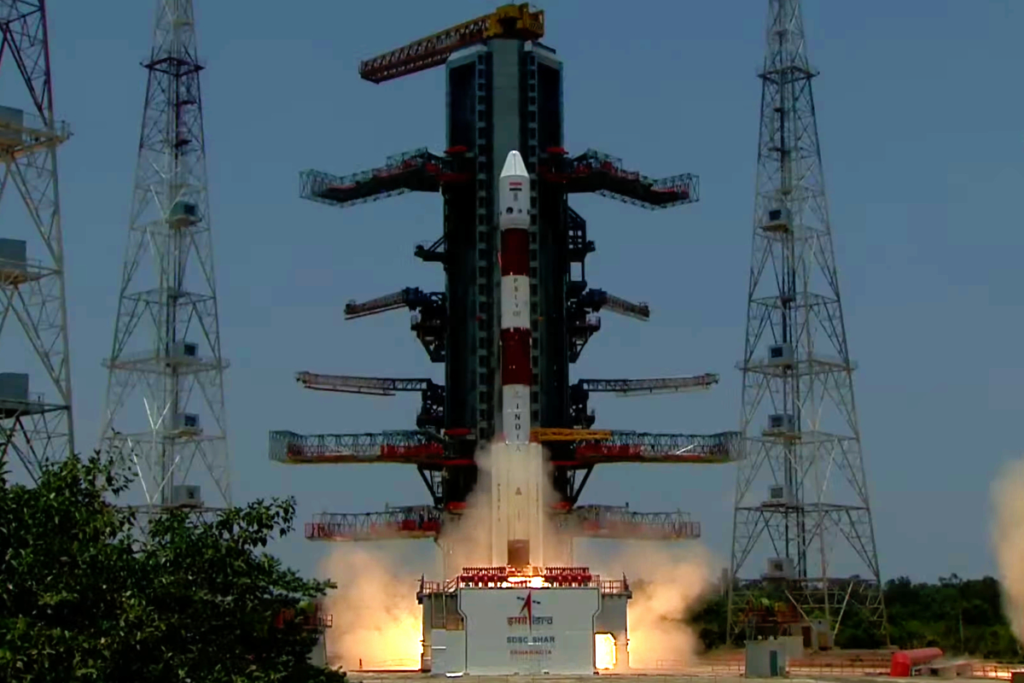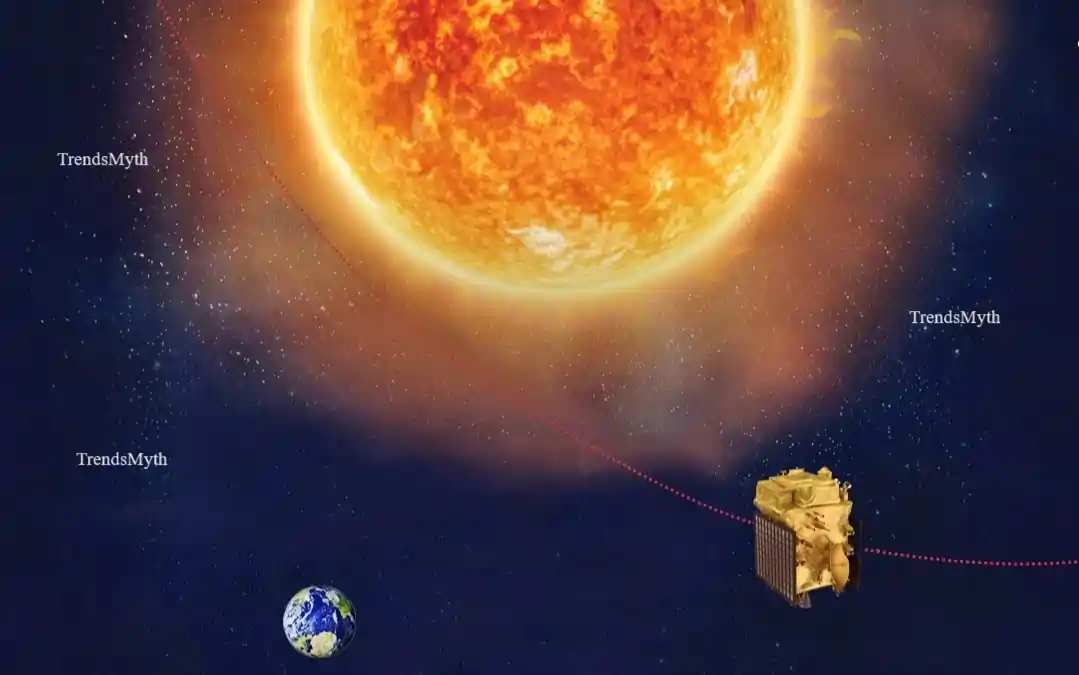S. Somanath, chairman of the Indian Space Research Organisation, revealed that India’s inaugural solar mission ‘Aditya L-1‘ will arrive at its target – L1, located 1.5 million km from Earth – on January 6.
ISRO launched the mission on September 2 from Sriharikota’s Satish Dhawan Space Centre as the inaugural Indian space observatory that studies the Sun in L1.
“We anticipate Aditya will arrive at Point L1 on January 6; exact details regarding his entry will be announced as appropriate,” Somanath informed media persons at the Bharatiya Vigyan Sammelan organized by Vijnana Bharati (an NGO dedicated to popularising scientific knowledge).
“Once it reaches L1, we must fire its engine again to prevent it from continuing its journey further,” said Mr. Hougen. When L1 is reached, “it will turn back around and become trapped there,” according to Hougen.
Aditya L1 will measure solar activity over five years. ISRO Director General said that once successfully placed at L1, their satellite will stay there for five years, collecting vital data that benefits India and all humanity. These insights will enable researchers to comprehend how sunlight influences our lives and the lives around it.
He expressed great interest in India becoming a more technology-based country.
Somanath announced during Amrit Kaal that ISRO had developed plans for an Indian space station known as the Bharatiya Space Station on orders from Prime Minister Narendra Modi.
He noted that India could only lead in some areas and should concentrate its efforts where its strengths lay.
Find Out The Current Status Of Aditya L-1 Mission
December 8, 2023
Aditya Plasma Analyser Package (PAPA): Status in orbit of health. The SUIT Payload takes full-disk pictures of the Sun at near-ultraviolet wavelengths
December 1, 2023
The Solar Wind Ion Spectrometer(SWIS) is now operational in the Aditya Solar Wind Particle Experiment (ASPEX) payload.
November 7, 2023
HEL1OS catches first High-Energy High-X-Ray glimpse of Solar Flares
October 8, 2023
Trajectory Correcting Maneuvre (TCM) was scheduled for 16 seconds on October 6, 2023, to adjust the rotation following the Trans-Lagrangean Point 1 Insertion Maneuver conducted on September 19, 2023. TCM ensures the spacecraft stays on course to Halo orbital insertion at L1.
September 30, 2023
The spacecraft is heading to Sun-Earth Lagrange Point 1 (L1).
September 25, 2023
Assessment of the space situation surrounding Sun-Earth Lagrange Point (L1)
September 19, 2023
The spacecraft is now traveling towards the Sun-Earth L1 Point.
September 18, 2023
Aditya L1 has begun collecting scientific data.
September 15, 2023
The fourth Earthbound Maneuvre (EBN#4) was successfully performed. The orbital distance is now 256 km by 121973 km.
September 10, 2023
The third Earthbound Maneuvre (EBN#3) was successfully performed. The orbital size is now 296 km by 71767 kilometers.
September 5, 2023
The second Earthbound Maneuvre (EBN#2) was successfully performed. The orbital size is 282 km by 40225 km.
September 3, 2023
The next maneuver (EBN#2) will be performed on September 5, 2023, at around 3:00 AM. The next maneuvre (EBN#2) is scheduled for September 5, 2023, around 03:00 Hrs.
The first Earthbound Maneuvre (EBN#1) was successfully performed from ISTRAC in Bengaluru. The new orbit achieved is 245 km by 22459 km. Satellite is in good health and working nominally
September 02, 2023
- India’s first Solar Observatory has started its journey towards the Sun-Earth L1 Point.
- The satellite was placed precisely in its orbit by the vehicle.
- PSLV C57 successfully launched Aditya L1.
Complete Detail
Aditya L1 Mission will be India’s inaugural space-based mission dedicated to studying the Sun. The spacecraft will be placed into orbit around Lagrange Point 1 (L1) of the Sun-Earth System, approximately 1.5 million km away, for maximum solar viewing without eclipse occultation/occultation issues.
Watch solar activity and its effect on space weather live! The spacecraft is equipped with seven payloads that will enable it to monitor the photosphere, chromosphere, and corona layers using electromagnetic field and particle detectors.
Four payloads directly observe the Sun from Lagrange Point L1, while another three conduct in situ analyses of particle and field fields.

Aditya payloads will provide essential data to fully comprehend coronal heating and mass ejection processes, pre-flares/flares characteristics/ dynamics/ particle/field propagation dynamics, and space weather phenomena.
Science Objectives
The primary science objectives of Aditya L1 are:
- Study of Solar Upper Atmospheric Dynamics (chromosphere, corona).
- Study of chromospheric heating and coronal mass ejections.
- Observe in situ particle and plasma environments to provide data for the study of particle dynamics.
- The heating mechanism of the solar corona.
- The coronal and loop plasma temperature, velocity, and densities:
- The origin, development, and dynamics of CMEs
- Identify the sequences of processes occurring at multiple layers, including the chromosphere and extended corona. This eventually leads to solar eruptions.
- Magnetic field topology in the solar corona and measurements of magnetic fields.
- Space weather drivers (origin and composition of solar wind)
Aditya L1 will be India’s inaugural space-based mission dedicated to studying the Sun. The spacecraft will be placed in orbit around Lagrange Point 1 (L1) of the Sun-Earth System – approximately 1.5 million kilometers away – to observe it without being obscured or eclipsed continuously.
Solar activity and its effect on space weather will be accessible live, thanks to a spacecraft equipped with seven payloads that monitor photosphere, chromosphere, and corona layers using electromagnetic field and particle detectors.
Four payloads observe the Sun directly from Lagrange Point L1. In contrast, three others conduct in situ studies of particle and field fields.
Aditya payloads will provide essential data to aid our understanding of coronal heating and mass ejection, pre-flares/flares characteristics/dynamics/particle propagation/space weather issues, etc.
RELATED ARTICLE: SHUKRAYAAN-1: ISRO IS NOW READY TO LAUNCH 1ST VENUS MISSION











1 thought on “Know Here That Aditya L-1 is How Much Far From Sun”